
Starting June 1st, 2023 Our warehouse fee will be $0.65/cubic foot per month
In effort to lower the warehouse storage fee during inflation, we have went narrow aisle racking.This construction took us four months but the project is finally completed. With narrow aisle racking, we are able to drop storage by 24%.We as partners will go through this inflation together.
12/13/2023
In the contemporary business landscape, as enterprises expand and diversify, warehouse management has emerged as a significant challenge, crucial to determining their success or failure. The Warehouse Management System (WMS) is not just a technological solution, it represents a pivotal advancement in optimizing logistics processes and resource management. Faced with market dynamics, WMS not only ensures business flexibility but also opens up opportunities for sustainable growth. Join with Worldcraft Logistics company in exploring the world full of challenges and opportunities in WMS, where precision, swiftness, and flexibility stand as the key to the success of modern enterprises.
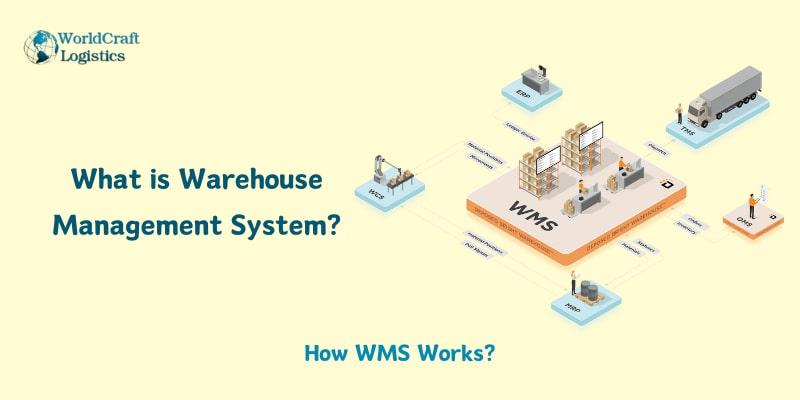
The manufacturing and retail sectors frequently utilize warehouse management systems (WMSs) since they are a sort of software that keeps track of all supplies and commodities as they enter and exit the warehouse. To put it simply, a WMS aids in the optimization of every warehouse procedure.
It's crucial because, in addition to keeping track of every item in your warehouse, it may design processes that make it easier for employees to choose items and package orders. You may keep track of the goods as they come into the warehouse, are loaded onto shelves and other locations, and depart the warehouse to fulfill orders.
When a consumer places an order, the warehouse management system can quickly determine whether the products are available since it has access to all the necessary data. The order will be marked as ready for packing by the WMS automatically, saving a human from having to manually cross-reference the order and the stock. This results in significant time and effort savings. When utilized properly, many WMS services really pay for themselves.
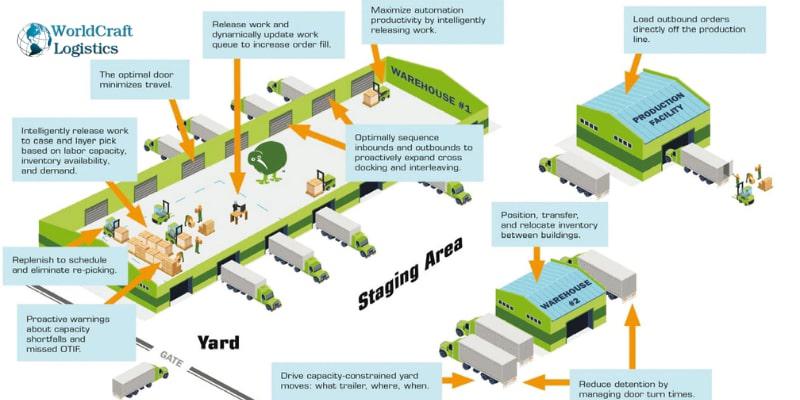
Three primary categories of WMS software exist: stand-alone (cloud-based, on-premise, and frequently an indigenous legacy system), cloud-based, and applications integrated into supply chain management or ERP platforms (cloud-hosted or on-premise). Every kind of WMS has benefits and cons, and different businesses will require different kinds. The optimal kind is as follows:
♻️ Standalone WMS: Typically, these systems are installed utilizing the company's own hardware on the premises. They can usually accommodate more customisation, albeit at a higher expense, and the company can have more stringent control over its software and data. The system is far more expensive initially than alternative solutions, but once a corporation owns it, they own it forever. However, the organization bears the cost of upgrades, maintenance, and other related activities. Implementing new technologies and integrating with other platforms gets harder as the WMS gets older.
♻️ Cloud WMS: With less upfront cost, cloud-based WMS solutions can be quickly implemented. When offered as software-as-a-service (SaaS), they are easier to scale as businesses expand and offer greater flexibility to accommodate seasonal and other changing market conditions. Cloud-based warehouse management provides a faster route to innovation through frequent updates. And the responsibility of keeping the system updated and maintained falls to someone else. SaaS providers also make significant financial and human resources investments in disaster recovery and security protocols. Additionally, cloud warehouse management systems interact with other solutions more readily.
♻️ ERP and SCM-integrated WMS: A few warehouse management systems are designed as add-ons or applications that work with supply chain and ERP platforms. These have the benefit of integrating more effectively with other solutions in related fields like business intelligence and accountancy. In order to provide end-to-end transparency and the coordination and execution of warehouse and logistics activities together, they offer a comprehensive perspective throughout the business and logistics chain. In the end, these features can be applied to streamline processes and offer quick, flexible fulfillment experiences.
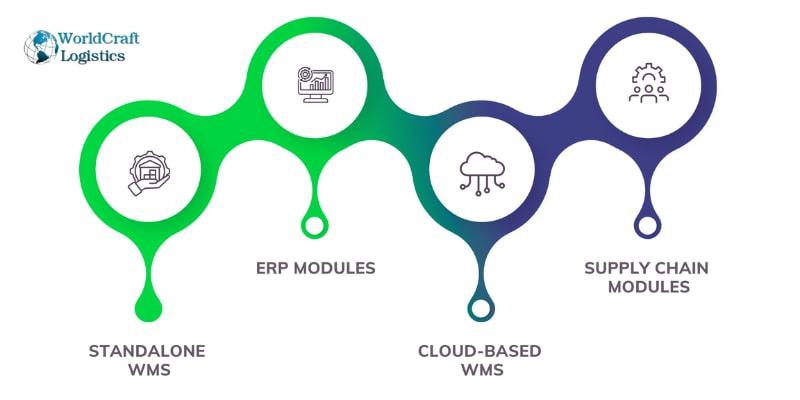
The way that consumers make purchases has been completely changed by the internet and digital technology, which has also complicated the supply chain, disrupted supplier marketplaces, and changed consumer purchasing habits. As a result, fulfillment operations must adapt by developing their own digitally connected solution. Warehouse management systems can provide a connected fulfillment solution that provides real-time visibility, scalability, and market reactivity by migrating to the cloud.

You must immediately adjust if you want to remain competitive in the new fulfillment economy. Your supply chain system may be quickly ramped up with a cloud-based solution. Strong logistics skills are at your disposal in weeks as opposed to months. Warehouse Management is prepared to facilitate intricate, multichannel fulfillment processes by integrating with a variety of technologies.
With no additional IT costs, it offers a warehouse management system with the same capability as an on-premises solution. Paying for hardware, software, and IT personnel to maintain the system is no longer necessary thanks to cloud technology. You're up and running faster and for less money.
With a cloud-based solution, you're always running the most recent version of the software. Pricing for software-as-a-service (SaaS) includes free IT infrastructure and routinely scheduled updates. Everything is housed in the cloud. Customers always have access to the most recent codebase at work thanks to updates, which function similarly to apps on mobile devices.

Cloud-based multitenant solutions offer a reduced total cost of ownership and an almost instantaneous return on investment. IT expertise, software, and hardware are not necessary with the cloud. It is prepared for system integration, allowing you to link all of your logistical activities together in a comprehensive manner.
On the other hand, a business that had an on-premises WMS could have easily covered the cost of many adjustments and changes over a five-year period. That company is considering a complete reinstallation and configuration when the time comes to upgrade.
Upgrading or maintaining a cloud-based WMS is currently the optimal solution. There are no incurred costs related to hardware, system or database administration, as well as IT infrastructure. Experts from each software provider will handle the installation, monitoring, and maintenance within their data centers. What was once a significant expense has now transformed into a cost-effective and predictable operational cost, enabling you to sustain your profit margins.
Today's global market demands agility, allowing you to easily expand your supply chain operations to adapt to constantly changing market conditions. Scale to meet the requirements of various adjustments and peak seasons. You will be prepared for new opportunities as they arise. You can achieve this business flexibility without on-premises fees, avoiding costs related to in-house production of hardware, software, and personnel. Therefore, you can allocate scarce resources to your company rather than to IT.

The integration of warehouse management service is a core feature. Integration with supply chain management (SCM), merchandising (MMS), and enterprise resource planning (ERP) systems is supported by the solution. XML and RESTful web services, which are industry best practices, can be used to send and receive data. Vendors of material handling equipment can simply create automated warehouse interfaces by utilizing these integration points.
Companies require smart warehousing technology, ranging from artificial intelligence and machine learning to autonomous robots, to adapt to changing client buying behaviors, channels, and expectations as well as to stay up with shifting markets and new disruptions.
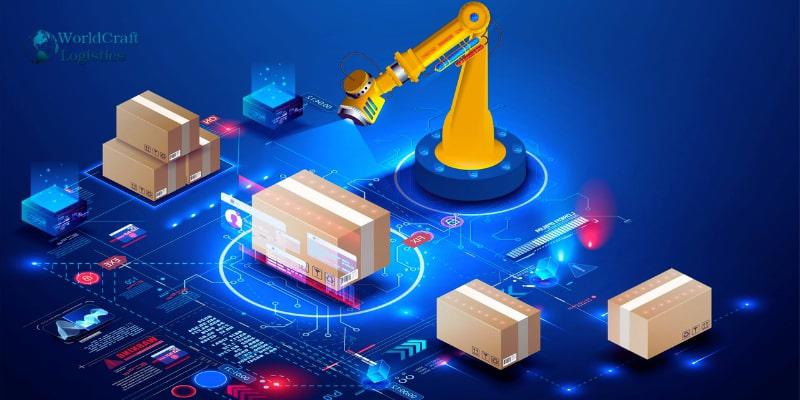
Distribution centers and warehouses are being significantly impacted by automation technologies. Automation can simplify several warehousing operations and procedures, such as data collecting, barcoding, scanning, picking and packing, shipping, and inventory tracking. Operating considerably more effectively and scaling to meet fluctuating demand is made possible by this automation. Additionally, it reduces human mistake from entering the incorrect SKU or shipping address.
Voice selecting, alternatively referred to as pick-by-voice or voice-directed warehousing, enables operators to do jobs and notify others when they are finished without utilizing paper or their hands or eyes. WMS system voice instructions are sent to operators using a voice-picking device, typically a voice headset or a voice-dedicated terminal, telling them where and when to pick incoming orders. Employees can communicate with the warehouse system in real time using normal language, including batch completion dates.
Mobile devices are essential for frontline warehouse workers to perform their tasks more effectively. 73% of respondents to the 2020 Warehouse DC Equipment study reported employing smartphones and tablets, 55% bar code scanners, and 18% GPS technology (with 28% indicating they planned to implement GPS within the following year). It is essential to have a WMS that supports integration with these technologies.
Operations in warehouses are increasingly using IoT and artificial intelligence. Instead than forcing companies to adhere to predetermined guidelines, they guarantee to assist them in adapting quickly and dynamically to changing storage situations. AI is able to analyze the data from IoT devices and produce previously unattainable sophisticated predictions. Together, the two technologies enable businesses to transition to a demand-driven storage strategy.

Numerous sources, including RFID, cellphones and other handheld devices, passive radio beacons, material handling equipment like conveyors, and more, provide IoT data to the WMS. AI systems collect this data and turn it into actionable insights, such trends, models for prediction, and other algorithms that assist businesses in making critical decisions depending on the state of the market. These technologies can be used to assist in the dynamic management of slot inventory, batch orders, labor movement, routing, and much more.
AI and machine learning empower warehouse robots to make informed decisions based on environmental data, utilizing haptic, thermal, audio, and video sensors. Integration with WMS software directs their actions.
Modern distribution centers leverage a variety of robots, both automating and complementing human tasks. Autonomous mobile robots (AMRs) navigate using onboard sensors and maps, adjusting routes as needed. Automated guided vehicles (AGVs) follow tracks or magnetic stripes for inventory movement. AMRs recognize package information for inventory and sorting, while aerial drones with optical sensors and deep learning capabilities swiftly update counts if WMS integration is supported. Automated storage and retrieval systems (AS/RS), such as climbing robots, shuttles, or cranes, facilitate object storage and retrieval with software guidance.
The use of robots in warehouses not only accelerates operations but also enhances worker safety and morale by replacing mundane tasks with strategic ones.
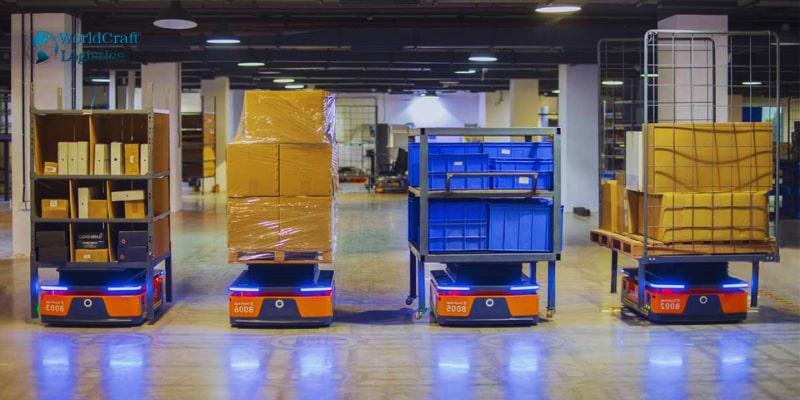
With augmented reality (AR) technology, a mobile device is used to superimpose instructions or information over a real environment, such an aisle in a warehouse, that has been captured with a camera. For example, AR smart glasses enable users to perform tasks without using their hands. These apps have the ability to plot out routes, identify trash cans, and do much more. Additionally, lift truck operators are being trained, and delivery routes are being made safer through the use of virtual reality (VR) technologies.
The supply chain can only function to the extent that warehouse procedures allow for increased speed, accuracy, and efficiency. By overseeing the order fulfillment process, from receiving raw materials to exporting completed goods, a WMS plays a crucial role in supply chain management.
The supply chain may be slowed down or interrupted, for instance, if raw materials are not received correctly or if parts are lost in a warehouse. WMSs play a crucial role in guaranteeing the seamless operation of these procedures by monitoring inventory and ensuring that commodities are appropriately sorted, stored, transported, and tracked.
Description of figure: WMSs are frequently used in conjunction with or connected with other related systems, such as inventory management systems, transportation management systems (TMS), and ERP
Recomment options such as: Oracle WMS Cloud, SAP Extended Warehouse Management, Manhattan Associates WMS, HighJump Warehouse Advantage, WMS by 3PL Central,... are a next-generation warehouse solution that is incredibly affordable and offers a new paradigm in SCM software. User-friendly interfaces, mobile solutions, and cutting-edge product features are provided by new supply chain management capability.
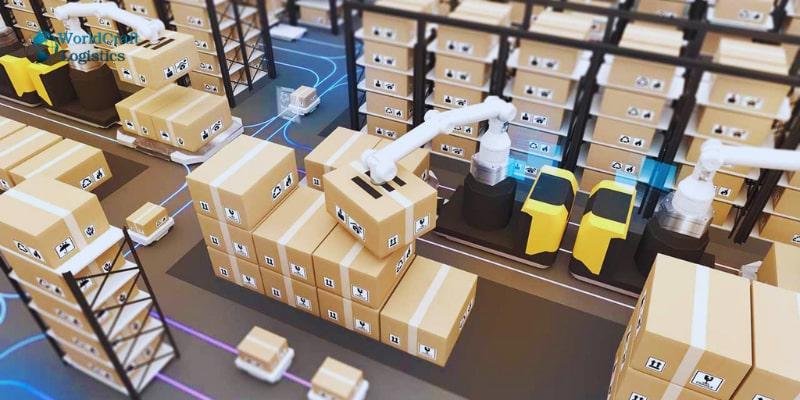
Businesses spend money on warehouse management software to automate and expedite inventory fulfillment procedures while keeping expenses under control. WMS systems are dynamic and easily adjustable. They can take advantage of the cloud for a quick and affordable implementation that yields the following advantages:
SEO
Digital Marketing/SEO Specialist
Simon Mang is an SEO and Digital Marketing expert at Wordcraft Logistics. With many years of experience in the field of digital marketing, he has shaped and built strategies to effectively promote Wordcraft Logistics' online presence. With a deep understanding of the logistics industry, I have shared more than 500 specialized articles on many different topics.

Education
01/05/2025

Education
02/18/2025

Education
01/01/2024

Education
08/28/2024

Education
11/13/2023